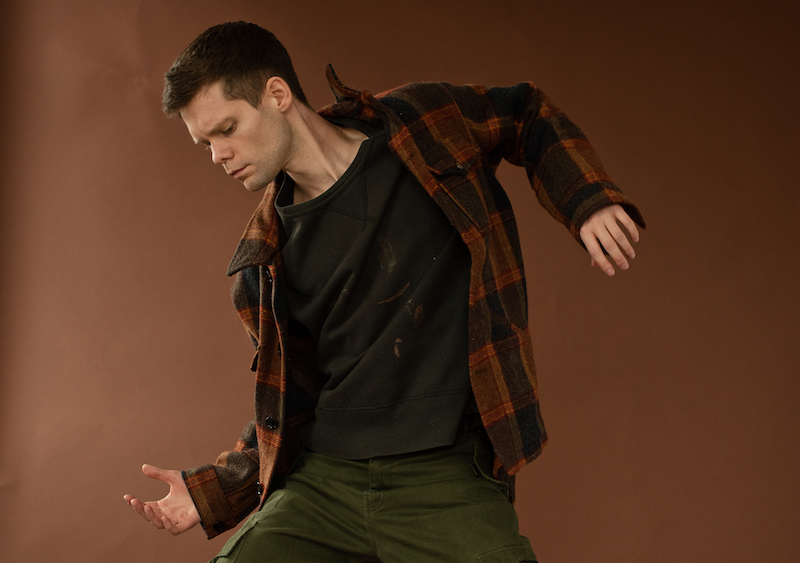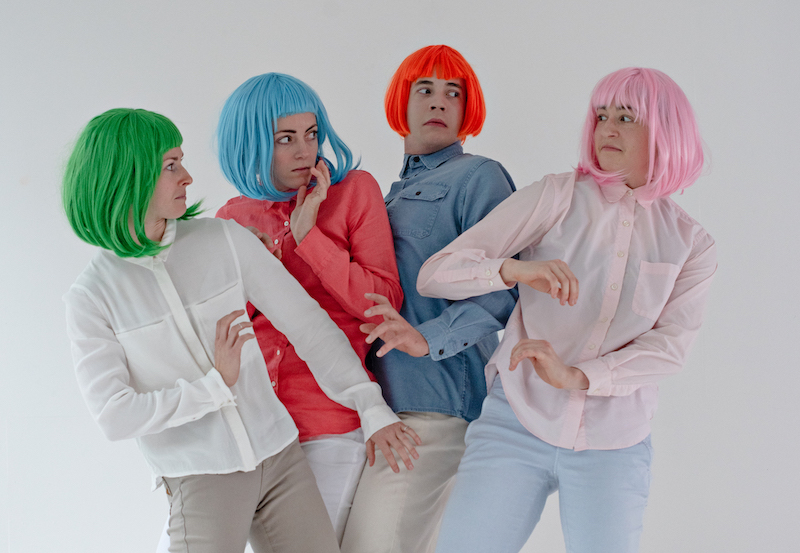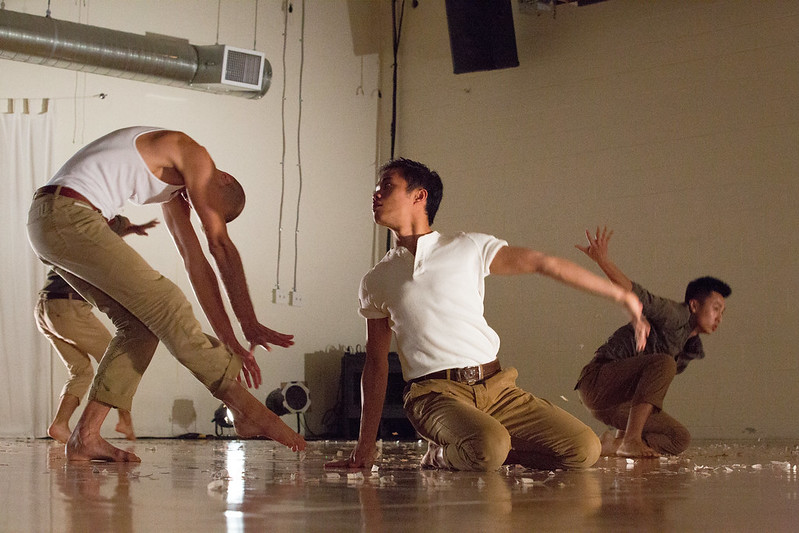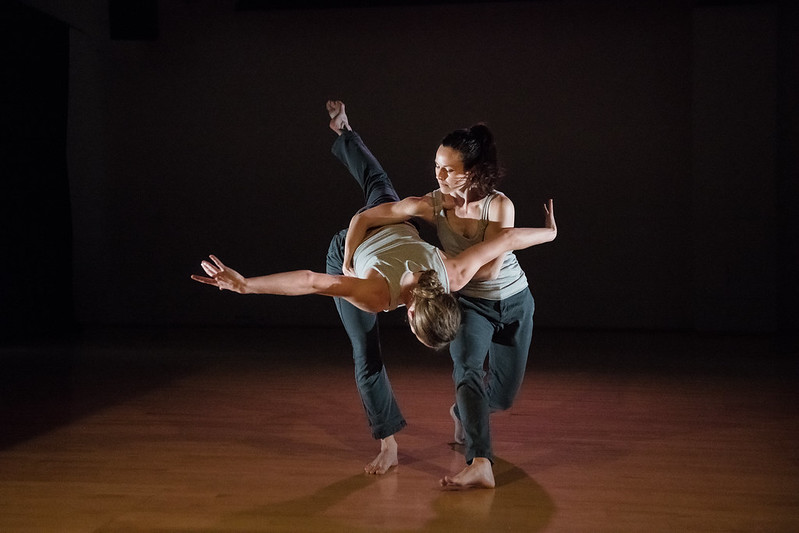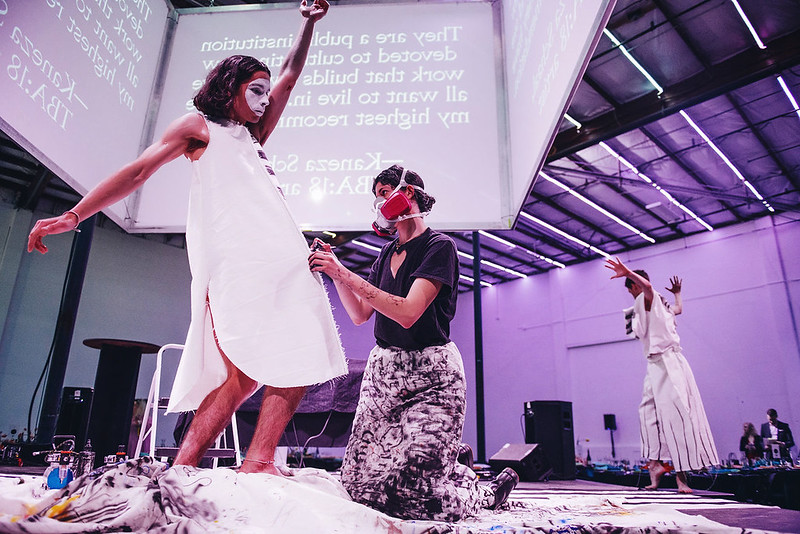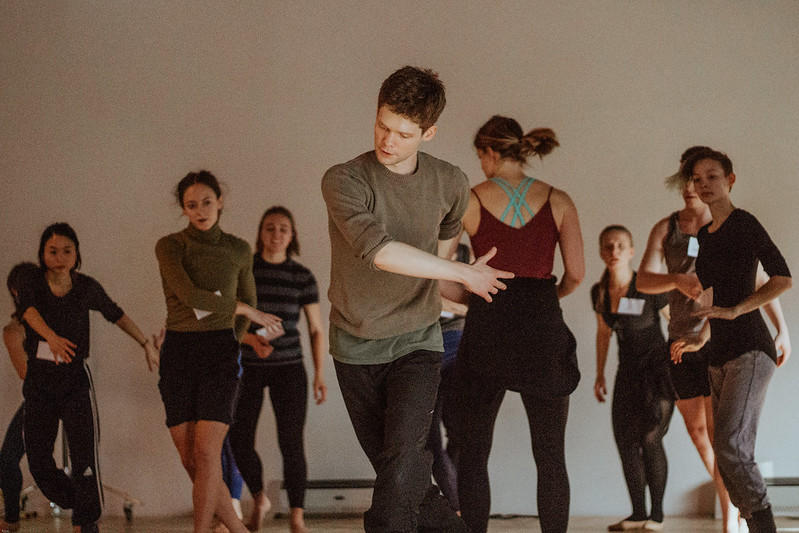Promoting LGBTQ Identity and Preserving History
An Interview with Shaun Keylock
Shaun Keylock is the director and choreographer of Shaun Keylock Company in Portland, Oregon. His work often explores facets of LGBT and queer identity. Here, he shares his path to forming his company, what shifts he’s observed in terms of LGBT and queer representation, and how he is preserving Portland’s contemporary dance history through his recent project, The Embodied Archive.
Photo by Chris Fucile
~~
Can you share a little about your dance history – what kinds of performance practices and in what contexts shaped who you are today?
I was born in Portland and grew up in a small town called Scappoose in Oregon. There were not a lot of dance classes offered in the area at the time, so I didn’t start dancing until high school. My sophomore year, I joined the dance team, which performed at football games, school assemblies and dance competitions. I was one of the only male dancers on the team. For me, dance has always represented a safe space for me to come out on my own terms and just be myself.
After high school, I moved back to Portland and started taking dance classes at the local community college. It was that first year of college that inspired me to pursue dance and choreography professionally. I took a course called Dance Appreciation, through which I attended professional dance concerts presented by White Bird Dance for free.
The following year, I started working as an intern for the former Conduit Dance, an artist-run, dance and performance venue in Portland. During my time at Conduit, I was able to see how choreographers were making dances in more intimate venues, and what it looked like to run a space that supports artists and communities.
After my internship, I attended Pacific University in Forest Grove, Oregon, where I studied Art History and Dance. I focused on critical art theory and methodology, allowing me to form my own thoughts about choreography and contemporary art practices. It was here that I started to explore my own conceptual ideas and experiment with choreography for the first time.
Photo by Chris Fucile
After university, I wanted more technical training; I had been training my mind for four years but not so much my body. I had been fascinated with modern dance in college, particularly the work of Doris Humphrey and José Limón, so I spent the following few summers studying with the Limón School in Southern California and New York City, training with former company members of the José Limón Dance Company.
I was eventually invited to audition for the José Limón Dance Company in New York City, but everything that could have gone wrong went wrong. That morning, every train out of Brooklyn was cancelled. Everyone was trying to get a Lyft, which was surging prices. I finally got to the audition, and the other dancers all had their numbers. I didn’t make it into the company that day, obviously. But when I got that invitation to audition, I said to myself that whatever happens is going to tell me what I need to do next.
So, I made the decision to stay in Portland and do my own thing. I formed Shaun Keylock Company that year. Those first few months, I rented a studio and started offering classes. I billed myself as a new choreographer teaching modern technique. Some weeks, no one showed up but I stuck with it. When no one came, I would work in the studio by myself. Eventually, that experience led me to getting a teaching position at another studio in town, which led to more people coming to my class and knowing who I am. It allowed for more connections. The company is now in its third season, and I couldn’t be happier with my decision to stay in the Northwest and create my work here.
Photo by Intisar Abioto
How would you generally describe your work to someone unfamiliar with it?
I like to describe my creative practice as being rooted in contemporary performance that is both technically sound and radically subversive. As a choreographer, my work explores LGBT and queer identity through highly physical dance movement and concept-driven performances.
The dances I create don’t follow traditional steps or patterns, but rather what feels like the natural next place for the body to go. My choreography is inspired by my training in the Humphrey and Limón schools. Doris Humphrey and José Limón were always looking at how to create dance through natural forces: how we breathe, how we oppose gravity every time we get out of bed, how each step is a series of falls. Lately I have been inspired by a return to classical forms and Countertechnique as an extension of my work within the Limón and Humphrey tradition.
What does your choreographic process look like?
It’s different for every piece. Most often, I start with a long conceptual phase, taking time to just be with the ideas that I’m exploring. In a lot of ways, I resonate with being a visual artist first. I’m constantly asking myself how the visuals, movement or concept might be perceived by the audience. My work often gets called cinematic because of this and I like that interpretation.
I work a lot with improv. Sometimes I bring a phrase to teach the dancers. Other times, I’m more interested in watching and observing the exploration of a concept. I think it is important that the process remains collaborative; I’m not interested in being the only voice in the room. I’m curious how a dancer might interpret a concept or idea that I give them, or how they might be able to make choices in the moment. I think this allows the choreography to always be interesting and exciting. There’s always a bit of random chance in my work.
I recently choreographed a duet called A Small Pleasure that looked at the relationship between Virginia Woolf and her female partner. They would often write love letters to each other during WWII. We deconstructed the letters and interpreted each line through movement: What does it mean to miss someone in the body? What does it look like for two women to communicate intimately while bombs are flying overhead? The audience didn’t necessarily know that was what inspired the movement though, because the soundtrack and costuming were contemporary.
Photo by Jingzi Zhao
Previously, we had done a piece that was very narrative based. So with A Small Pleasure, I wanted to create something completely abstract. Each time I create something new, I ask: What is it I’m wanting to share? With abstract work, I love hearing how each audience member sees something different.
Are there certain themes or issues that feel important to you to keep tackling or addressing in your work?
I often find myself returning to themes of LGBT and queer identity. I think it relates to not having a lot of exposure to queer and gay history when I was younger. My creative practice has allowed me to learn it. Additionally, it continues to help me feel closer to my community; I want to see the stories and themes of LGBT and queer communities represented onstage.
How important is it to you that your dancers personally identify with LGBT and queer issues?
It’s important to me to work with LGBT and queer dancers as well as other marginalized dancers. With that being said, there are many talented dancers who are looking for work who aren’t necessarily marginalized in that way. In that case, it’s important that they share our value system. I also think about who is represented onstage. For example, if we were doing a work on trans identity, I would want to make sure as a company we worked with the trans community to cast the piece appropriately.
We have work to do on this. It’s about reaching out and cutting down barriers. If you are looking to create opportunities for marginalized communities, how can you eliminate some of the barriers that might make those dancers not able to apply?
What are some shifts (if any) you’ve seen or experienced with regards to representation of LGBTQ+ voices in dance?
There are big shifts happening. I think one of the best things is that I don’t feel alone anymore. There are some incredible artists and arts leaders out there making and supporting LGBTQ+ representation in dance. It’s been great to see some new dance festivals and organizations being created specifically for LGBT and queer artists. I’m hopeful we will continue to see more opportunities in the next few years, and that larger and more established organizations will also start to follow this pattern.
What can allies – studio owners, presenters, festival organizers, etc. – do to help promote LGBTQ+ visibility in their own niches of the dance world?
I think it comes down to how an institution or organization can use their status or privilege to create real and substantial change to better serve the community. If an organization or institution wants to be an advocate for the LGBTQ+ and other marginalized communities, then that organization or institution must create opportunities for artists from those communities; present these artists and then pay them well for it.
Photo by Gia Goodrich
Can you share more about your upcoming performance series, The Embodied Archive?
The Embodied Archive is an intergenerational collaboration between my company and local choreographers who have significantly shaped the history of contemporary dance in our region. Through this new program, we work with local choreographers to reconstruct their dances, many of which have not been seen in more than 30 years, and then perform them onstage as part of our repertory.
For the first iteration, we’re working with Gregg Bielemeier, who came to a show I presented last spring. We had a conversation afterward and he was excited about my work. He was the one who initiated the idea of working together.
Gregg has VHS tapes of all his choreography from 1993 to 2002, which we’ve been able to have digitized. From there, our company will reconstruct these dances. Gregg will be in the studio with us from beginning to end offering his guidance and support. He’s also bringing in former collaborators to assist as well. At the end of the process, we’ll have reconstructed seven of his dances into an evening-length performance to premiere in late June.
We’re hoping to bring in a different choreographer to do this every two years. There are so many choreographers whose work exists in the collective history of the local community here. So often, new dancers come to Portland and don’t know the history. It is important to me that I honor the legacy of our artists, to not only inform the work that I am making with my company today, but also to teach new audiences about the history of this community and what came before us.
What else is on the horizon for you?
I am very excited about my next work, which will premiere with the support of White Bird, an international dance organization and presenter based here in Portland. This new work will be my first evening-length piece and will premiere in several parts over the next few years. The first part will be presented in White Bird’s next performance season in January 2021, with the following parts being shown separately over the next year or so.
Any other thoughts?
We just moved into our own studio space inside the Baker Building in North Portland. It’s a 2,000 sq. ft. ballroom. At our new studio, we’ll be able to teach class, rehearse, and host events. It’s an exciting opportunity for us to have a home base that will serve not only the company, but also our local community here in Portland.
Photo by Alex Iverson Cress
~~
To learn more, visit www.shaunkeylock.com.

